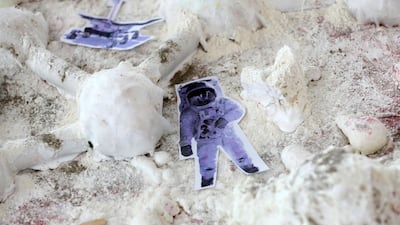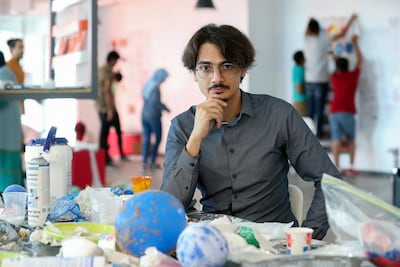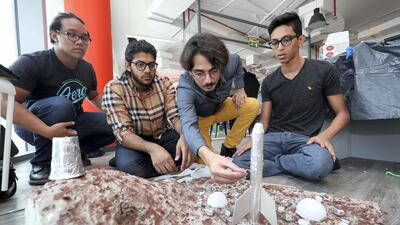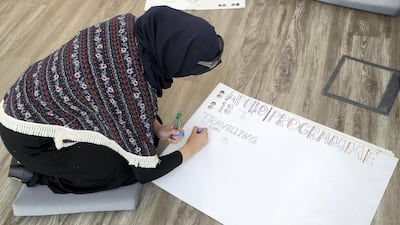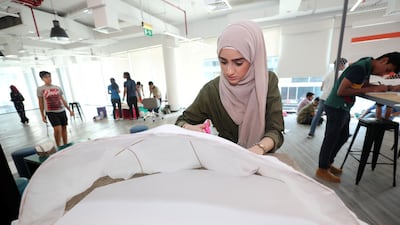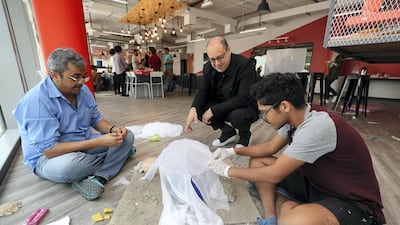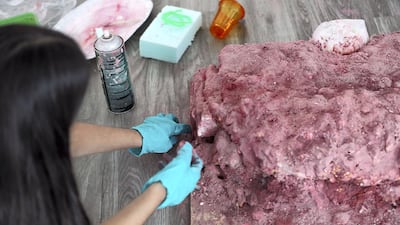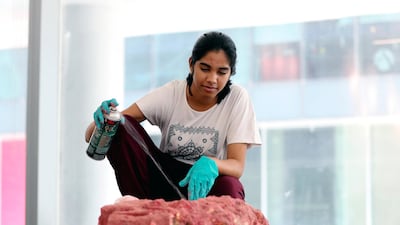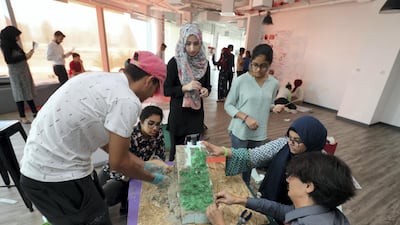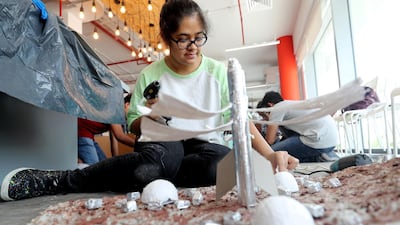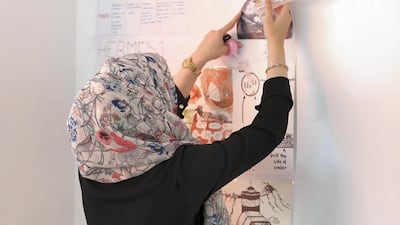The terrain is tough. It's arid, rocky, freezing cold and practically lifeless. There are high levels of harmful radiation to contend with. There's no air pressure, no oxygen to breathe and very little gravity. Among such hazardous conditions, sustaining human life on Mars would appear to be an almost impossible feat. And yet, these challenges might not be as insurmountable as one might think. A group of workshop participants, ranging in age from those in their early teens to some in their early twenties, spent three days in Dubai envisioning concepts for habitation on the red planet.
Last week, the Dubai Institute of Design and Innovation (DIDI) wrapped up a workshop titled Living on Mars, where close to 60 participants put their heads together to come up with eight designs for a home or colony on the planet. What they did, essentially, was envisage the designs of the future by imagining solutions to the challenges of life on a new, hostile planet.
"The results, the solutions they came up with, the passion of the students, it was all so unexpected and so surprising and inspiring. It was amazing. They even skipped lunch on the last day, and would arrive two hours before the day was meant to start, just to work on their models," says Raffi Tchakerian, an industrial aerospace designer and researcher, and the DIDI faculty member who guided the workshop.
What were some of the solutions?
Admittedly, the content of the session was pretty fascinating; it’s probably no surprise that the young participants were fully engrossed in the challenge of overcoming the problems of how the human race might survive on Mars. What was surprising, says Tchakerian, were the solutions themselves.
“Several groups came up with the idea of integrating their spaceships into the colony they were building,” he explains. “Once they land on Mars, they don’t have a base to use yet. They’ll use the spaceship as home base and repurpose it to come up with innovative ways to create a home, while maximising the use of resources already there.”
At the beginning of the workshop, Tchakerian spoke to students about the role of design in space, as well as the conditions needed to survive on Mars, and drove home the point that not everything you might need could be brought from Earth to Mars. “Rockets have a limited load, so students had to really think about what Mars already has for them to build their stations and colonies, which is the concept of onsite resource utilisation,” he says.
One group created canopies around their spaceship using special textiles that they would then douse with liquid, which would immediately freeze in Mars’ extreme temperatures, creating a hard shell. They then came up with the idea of covering that shelter with Martian soil, which would protect from radiation and the very real danger of space debris, and ensure that the ship was fully integrated into its surrounding environment.
“The atmosphere on Mars is very thin, almost non-existent, so harmful radiation is constantly bombarding the surface,” explains Tchakerian. “Humans can’t be on the surface for long periods of time without special suits and protection, so you need to be underground or a couple of metres beneath the soil or sand. The participants grasped that.”
One team proposed building inside one of Mars’ countless lava tubes, which are underground caves created by volcanic activity. They form when the edges of lava from a volcanic eruption cool and form a ridge around its flow. The ridge later cools, forms a crust and becomes a tunnel. On Earth, lava tubes have been found in places like Hawaii, Iceland, Australia and Sicily.
Another suggested landing a rocket ship inside a lava tube, and keeping only part of the vessel accessible from the surface, so that most of it would be protected from harmful radiation on the planet’s surface.
'They thought of everything'
Hani Asfour, associate dean of DIDI, says students showed a "beautiful" combination of creativity and technical knowledge, choosing to build their colonies in specific areas based on what minerals were accessible there, or the underlying water available, or temperature constraints. "We want to nurture the next generation of innovators and what better way than thinking about inhabiting Mars," asks Asfour.
Using a variety of materials – from mud, clay and foam to wires, plaster and resin, and even 3D printers and 3D modelling devices – students created their Martian civilisations on boards and presented them in front of a jury of faculty members, who examined the innovative designs and offered feedback to each group.
Two groups designed igloo-like structures and domes to be built on the polar region of the red planet, which is covered with ice. Participants proposed using the ice as a building material, and processing it to create water – a solution that would also provide protection from radiation. “Students considered the craters on Mars, the polar region, the valleys, the canyons, the lava tubes, the flat surfaces. Some – came up with ideas for a first generation colony, some thought of ideas for a more advanced colony of people who might have been on Mars already for 10 or 20 years. They thought of everything,” says Tchakerian.
Many focused on the importance of greenery, both to sustain life and provide psychological respite from being indoors, and to create the illusion of outdoor living and fresh air as an added bonus. "Many designed common areas surrounded by greenery, which is essential," says Tchakerian. "They grasped an awareness of the necessity of design in the aerospace world by making that choice."
From sending mining tools to Mars ahead of time, to building on the edge of craters, or using robots to mine on the red planet, the solutions kept on coming. One group even came up with an escape plan, should the need arise. "Integrating ways to save the colony into the design is genius," he says. "They did this by using their spaceship as part of the colony, and making it so the membranes of the shelter can detach easily from the ship and allow it to launch off in case of disaster or emergency."
With the UAE planning to build the first city on the red planet as part of its 2117 Mars project, these are all solutions that could actually materialise, and one day save humanity by sustaining life on an entirely new planet.
"And it's all through grasping innovations in design," Tchakerian says.
